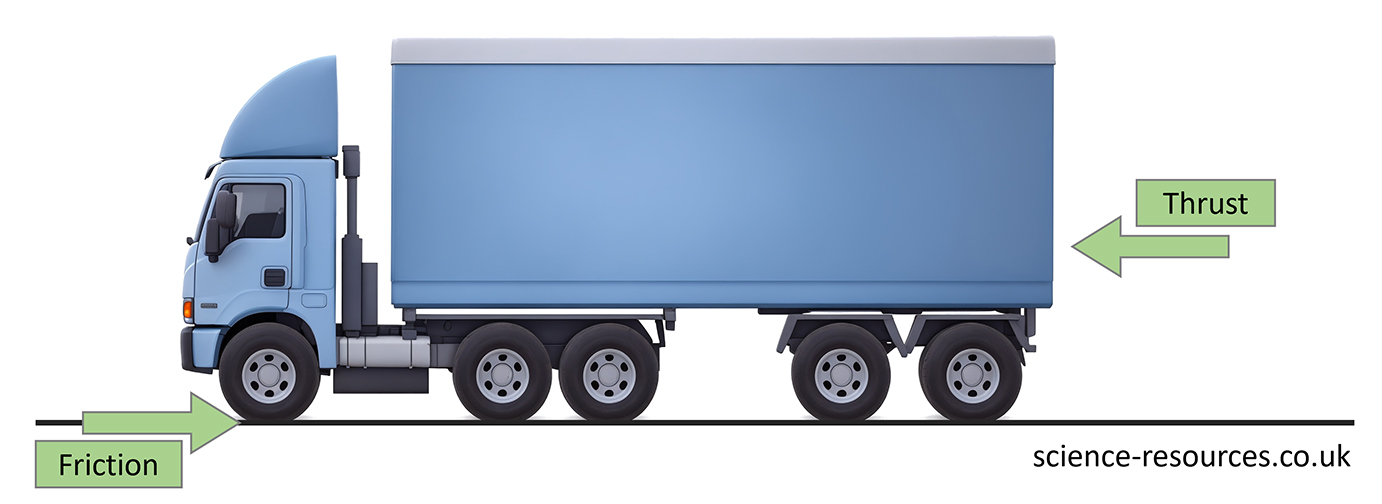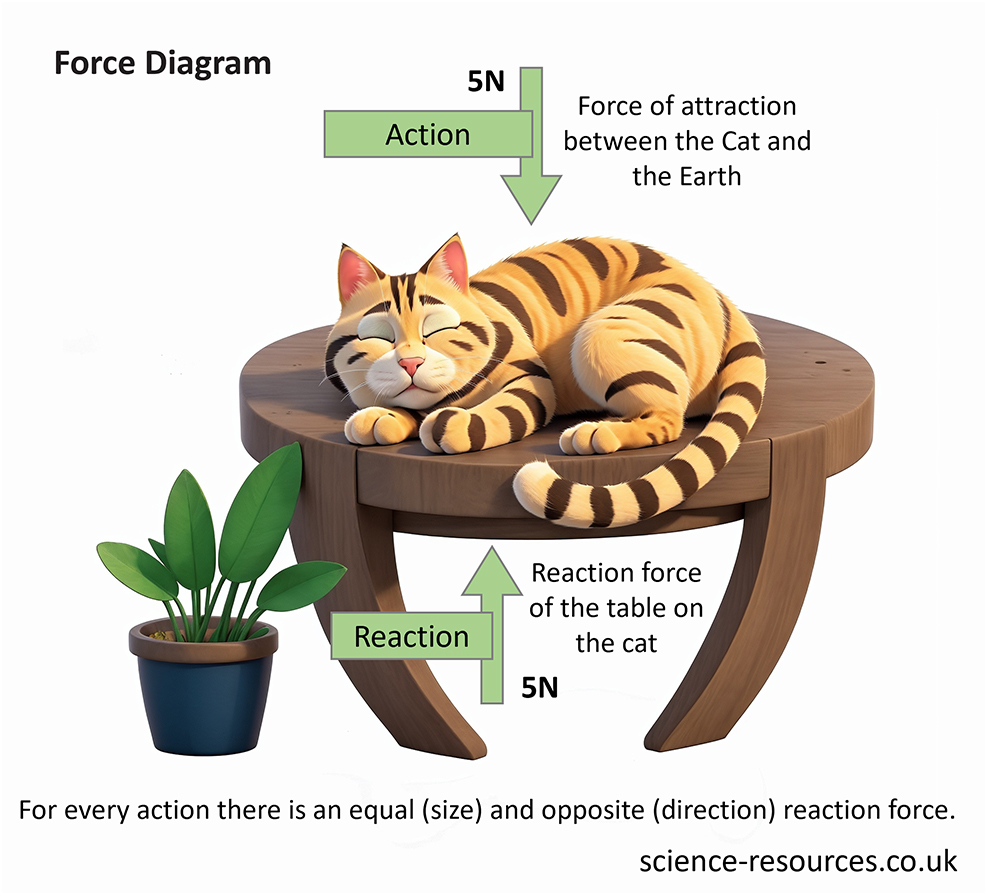Balanced forces
Balanced forces Assuming that the forces acting on the truck are balanced:
When an object has two forces acting on it that are equal in size but opposite in direction, we say that the forces are balanced.
This is related to the First Law of Motion by Isaac Newton. This law says that an object will keep doing what it is doing, either staying still or moving with the same speed and direction, unless an unbalanced force changes its motion.
This means that if the forces on an object are balanced, the object will not change its speed or direction.
We can use a truck as an example to understand Newton’s first law:
Force Diagrams The diagram above shows that the two arrows have the same length. This means that the cat has two forces that are equal (but in opposite directions).
We can use arrows to show the direction and the size of the force on an object. This is called a force diagram.
The length of the arrow shows the size of the force. When the forces are balanced, the total force is zero. This total force is called the resultant force.
Summary: